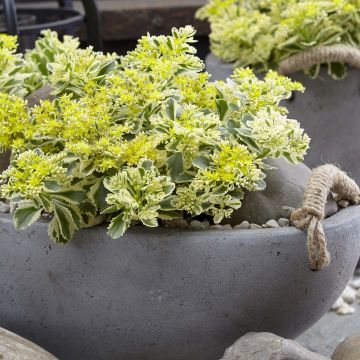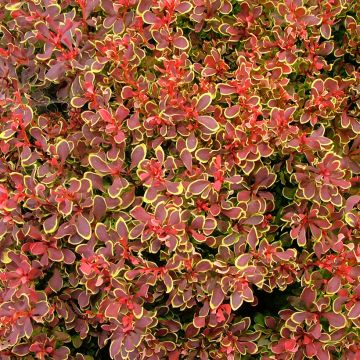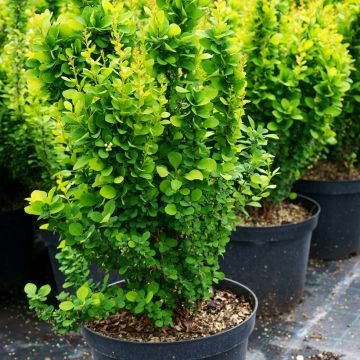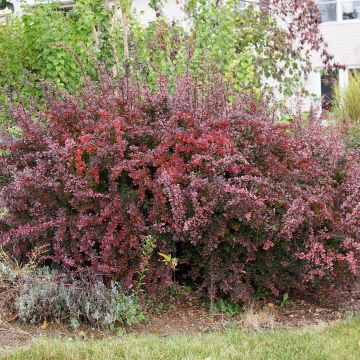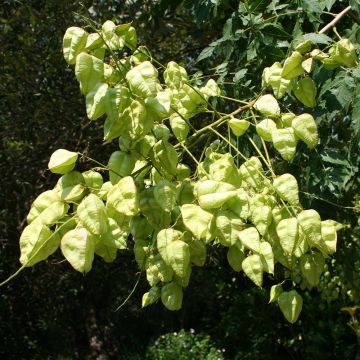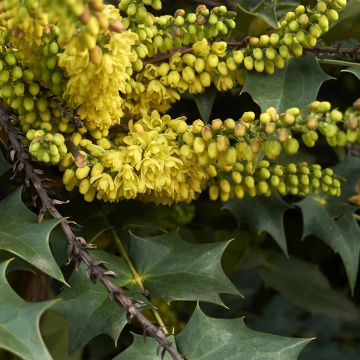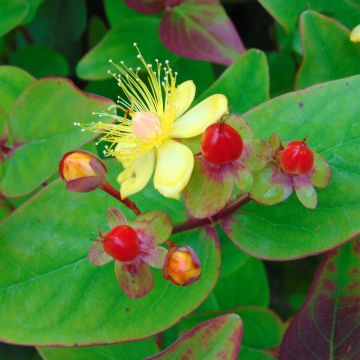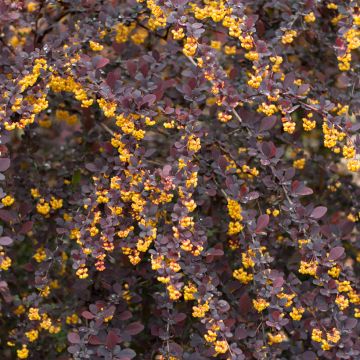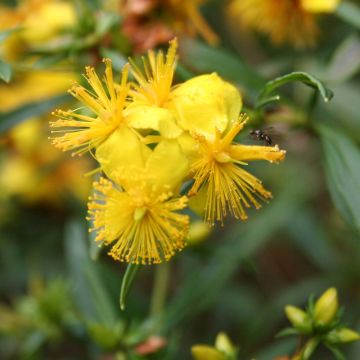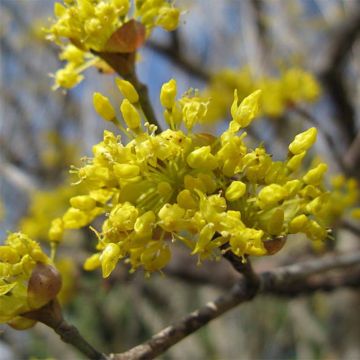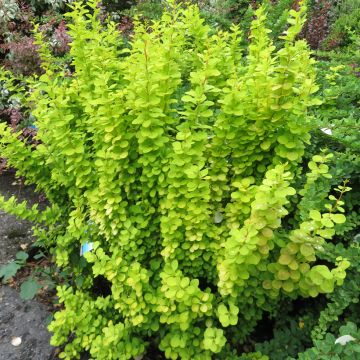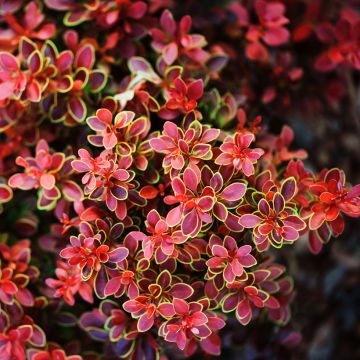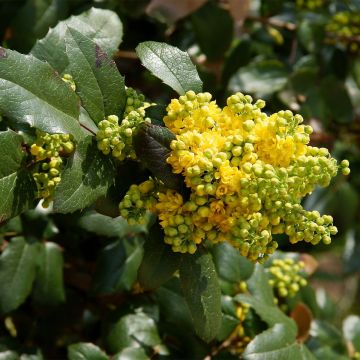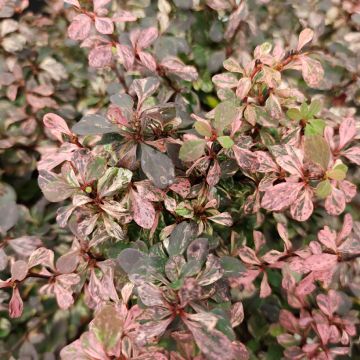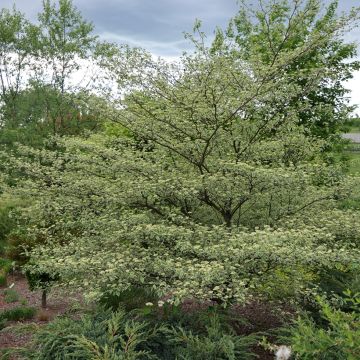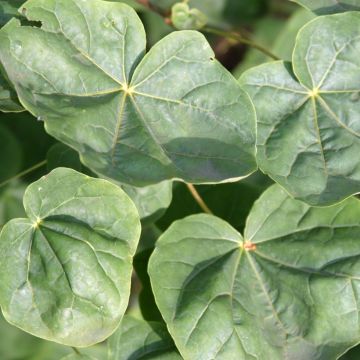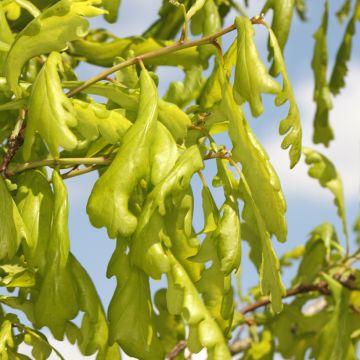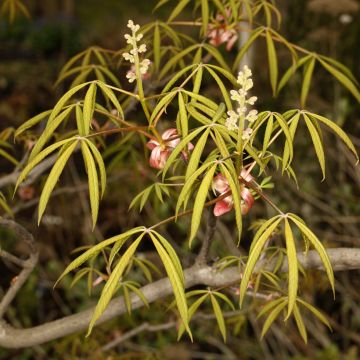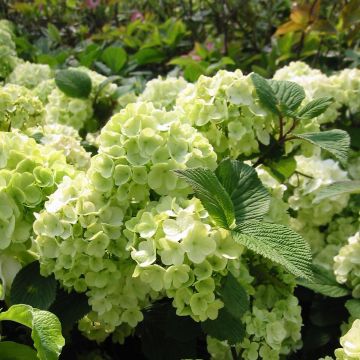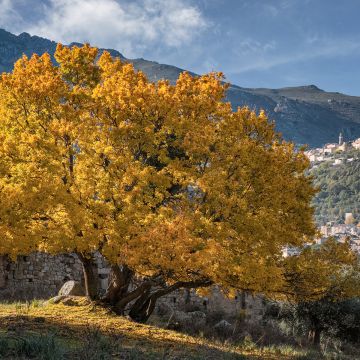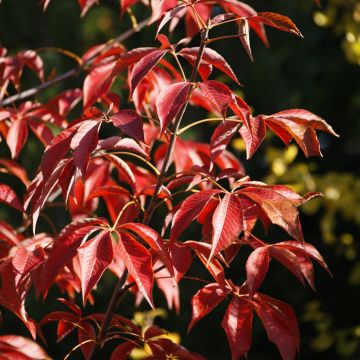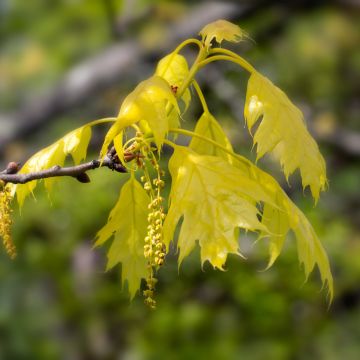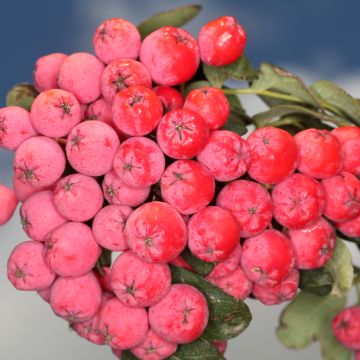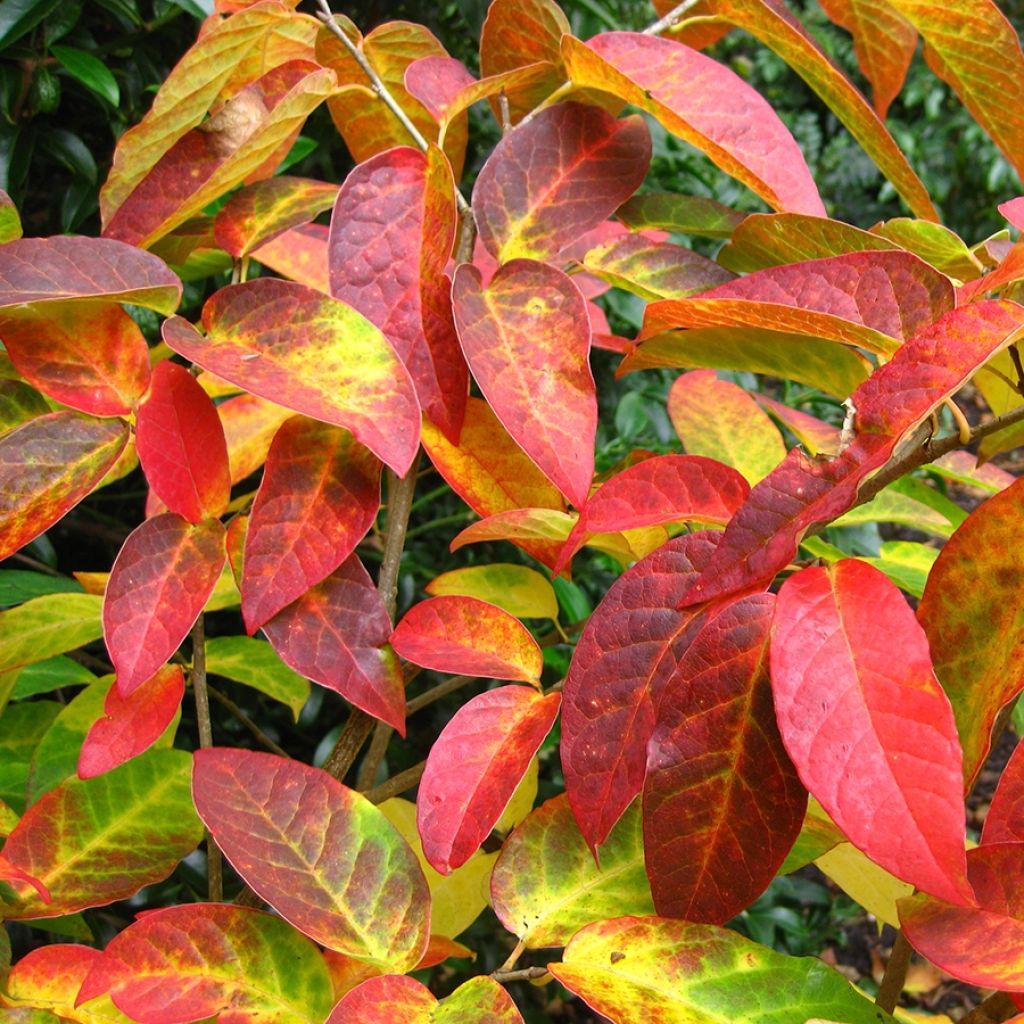

Sapium japonicum
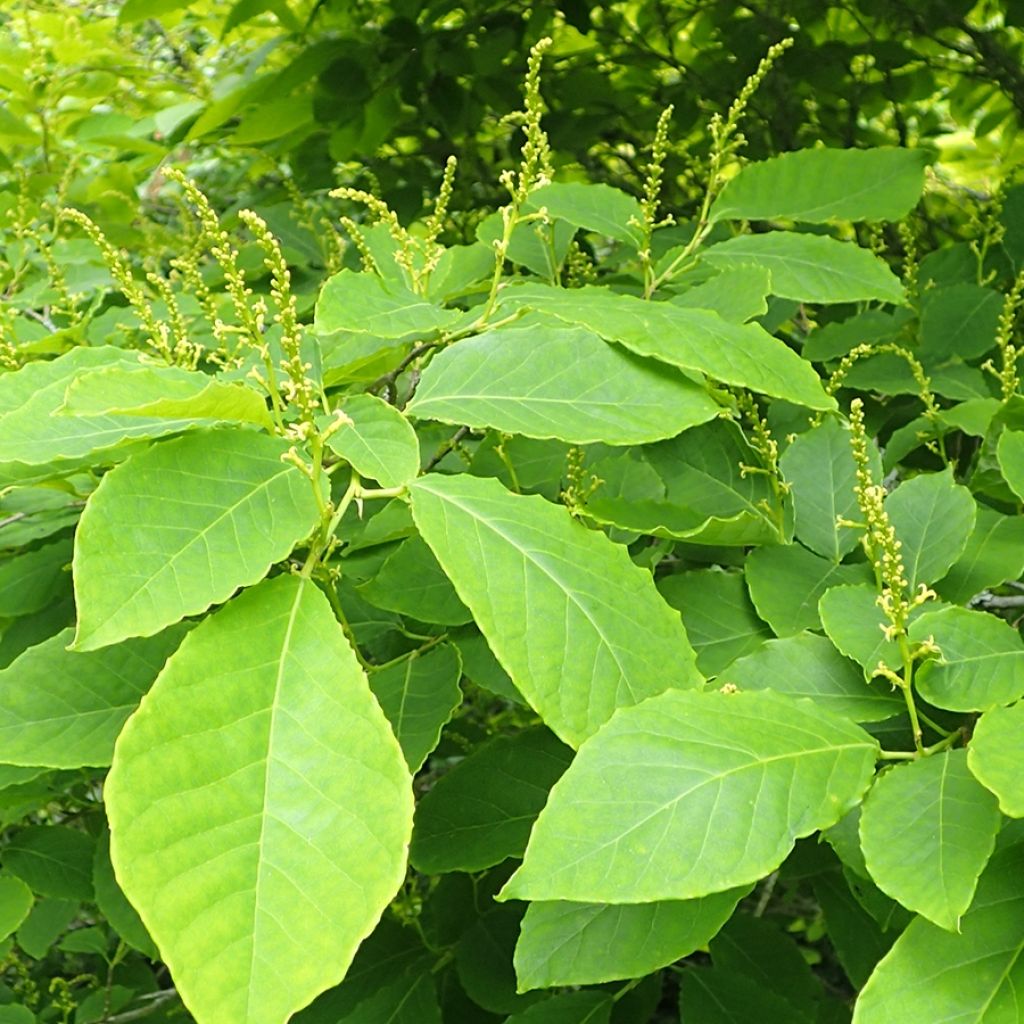

Sapium japonicum
Sapium japonicum
Sapium japonicum
Why not try an alternative variety in stock?
View all →This plant carries a 24 months recovery warranty
More information
We guarantee the quality of our plants for a full growing cycle, and will replace at our expense any plant that fails to recover under normal climatic and planting conditions.
Oversize package: home delivery by special carrier from €6.90 per order..
Express home delivery from €8.90.
Does this plant fit my garden?
Set up your Plantfit profile →
Description
Sapium japonicum (synonym Neoshirakia japonica) is a relatively unknown bush that deserves to be planted more often for its fantastic autumn colours. Its green leaves turn crimson red during the first cold weather, making Sapium one of the best ornamental plants for autumn. Its summer flowering and its fruits are nondescript, but its autumn splendour is worthwhile. More hardy than frequently stated, this bush seems to resist, according to certain sources, down to approximately -12 °C, or even more, which is adequate for many regions. Humus-rich, acidic or neutral soil that remains slightly moist will suit it perfectly.
Sapium japonicum, sometimes nicknamed Japanese Tallow Tree, is a member of the very large Euphorbiaceae family. This family includes more than 6000 species distributed in all areas of the globe, except the Arctic and Antarctica. Euphorbiaceae produce latex that can be irritating or even toxic.
Originally from the Far East, Sapium comes to us from the humid forests of China, Korea, and Japan: it is a species of moist undergrowth. In its original habitat, it forms a small tree about 7 or 8 m (23 or 26ft) tall, with fairly slow growth, growing in low-altitude mountainous areas, from 100 to 400 m (328 to 1312ft). In our gardens, it is a bush that reaches a height of 3 m (10ft) with a spread of 2 m. Its leaves measure from 7 to 16 cm (3 to 6in) long, 4 to 8 cm (2 to 3in) wide, and are elliptical or ovate in shape. The upper surface is glossy green, the lower surface is paler. A short petiole (2-3 cm (1in)) connects them to the grey-brown, smooth, and slender branches. Between May and July, it produces inflorescences from 5 to 11 cm (2 to 4in) long, in the form of spikes consisting of numerous small male flowers at the top and a few female flowers at the base. These yellow-green inflorescences are graceful but quite insignificant. They develop into yellow fruits speckled with brown, small 3-lobed capsules measuring 10 to 15 mm (1in) in diameter, which ripen in September and then open to project their seeds a fair distance. When autumn and its cool nights arrive, the foliage turns crimson red, before falling. Caution, this plant contains toxic parts. It is generally free from any disease or insect attack.
This species appreciates moist soil and grows in acidic to neutral conditions, in humus-rich soil. These soil requirements are ultimately more limiting than its hardiness, which is better than often stated. This plant has been successfully tested in cold regions such as Burgundy or Pennsylvania in the United States, as well as in Belgium (Arboretum Wespelaar).
In the garden, Sapium japonicum enchants in autumn with its fiery colours. In a sufficiently large garden, it can be planted in the foreground of a Cercidiphyllum japonicum, the caramel tree, whose lovely heart-shaped leaves will associate with the explosion of colours from Sapium in autumn. In a smaller area, the Fothergilla major can be chosen, which shares the same cultural requirements as Sapium and turns red, orange, and yellow at the end of the season. Essential for yellow tones, the Ginkgo will perfectly complement the red of Sapium, especially with the dwarf variety Mariken, well-suited to small spaces.
Report an error about the product description
Sapium japonicum in pictures
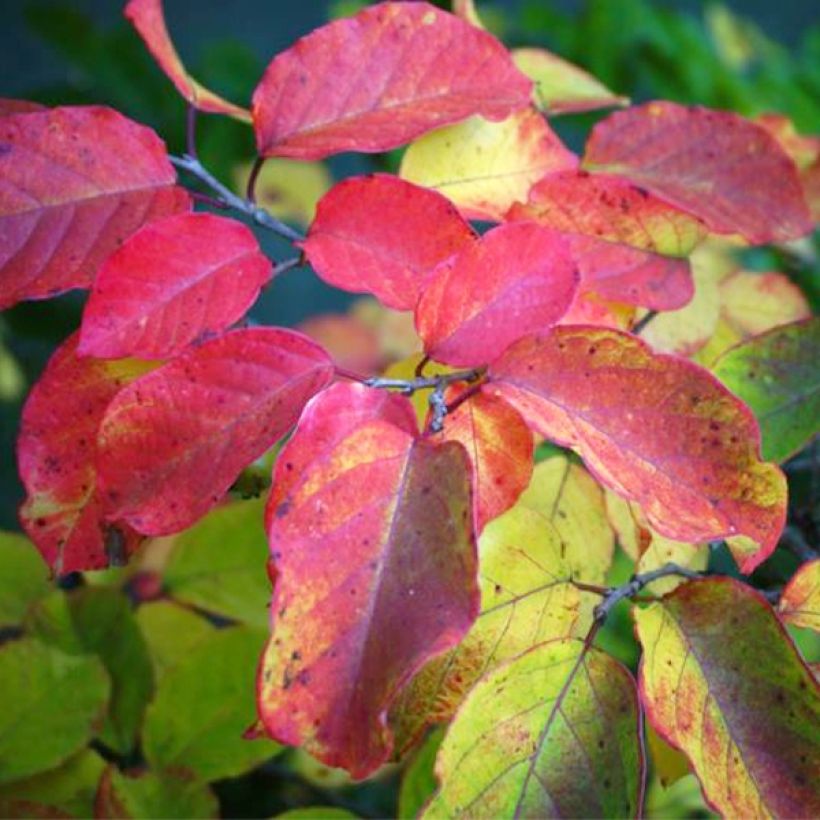

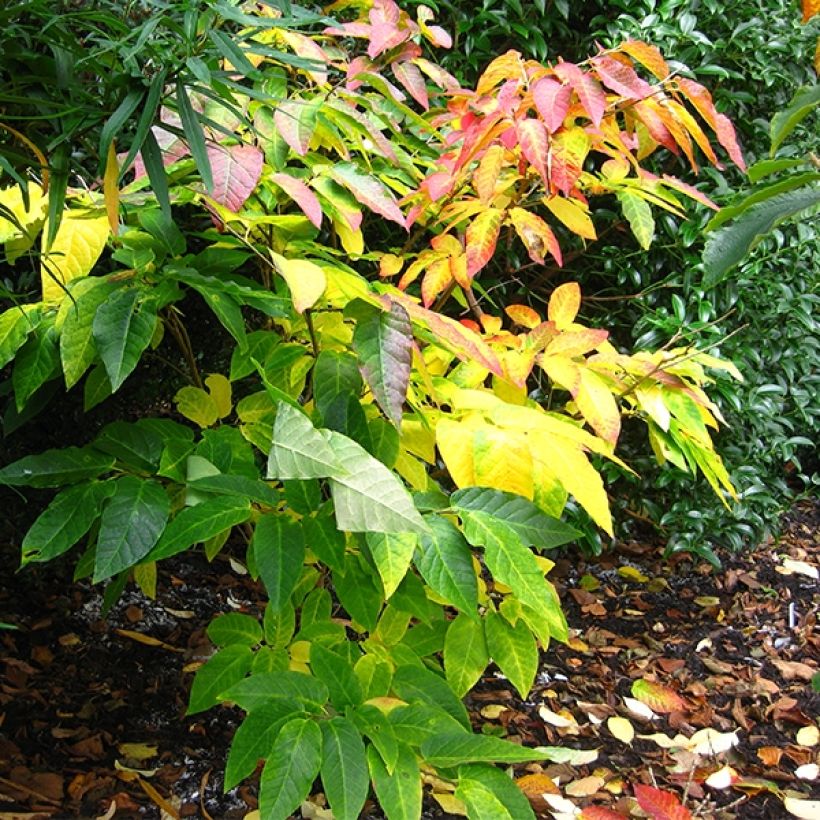

Plant habit
Flowering
Foliage
Botanical data
Sapium
japonicum
Euphorbiaceae
East Asia
Other Shrubs with coloured autumn foliage
Planting and care
Sapium japonicum grows in neutral to acidic soil, without limestone, remaining moist even in summer. It prefers rich, well-drained humus soils, and under these conditions, it proves easy to cultivate. Choose a location in semi-shade or not too intense sunlight. It will not grow well in too much shade. Its cultivation method is quite similar to that of a rhododendron. Dig a hole 50 cm (20in) on each side and at the bottom, incorporate a little compost mixed with the existing soil to enrich it. Soak the root ball in a bucket for 20 minutes, then plant it in the hole and backfill. Water it abundantly afterwards and monitor the watering (with non-limestone water if possible) during hot periods to prevent the soil from drying out.
The hardiness of this plant seems to be better than generally announced (-12°C (10.4°F)). This will depend on the growing conditions, exposure, and protection against the wind.
Planting period
Intended location
Care
This item has not been reviewed yet - be the first to leave a review about it.
Haven't found what you were looking for?
Hardiness is the lowest winter temperature a plant can endure without suffering serious damage or even dying. However, hardiness is affected by location (a sheltered area, such as a patio), protection (winter cover) and soil type (hardiness is improved by well-drained soil).

Photo Sharing Terms & Conditions
In order to encourage gardeners to interact and share their experiences, Promesse de fleurs offers various media enabling content to be uploaded onto its Site - in particular via the ‘Photo sharing’ module.
The User agrees to refrain from:
- Posting any content that is illegal, prejudicial, insulting, racist, inciteful to hatred, revisionist, contrary to public decency, that infringes on privacy or on the privacy rights of third parties, in particular the publicity rights of persons and goods, intellectual property rights, or the right to privacy.
- Submitting content on behalf of a third party;
- Impersonate the identity of a third party and/or publish any personal information about a third party;
In general, the User undertakes to refrain from any unethical behaviour.
All Content (in particular text, comments, files, images, photos, videos, creative works, etc.), which may be subject to property or intellectual property rights, image or other private rights, shall remain the property of the User, subject to the limited rights granted by the terms of the licence granted by Promesse de fleurs as stated below. Users are at liberty to publish or not to publish such Content on the Site, notably via the ‘Photo Sharing’ facility, and accept that this Content shall be made public and freely accessible, notably on the Internet.
Users further acknowledge, undertake to have ,and guarantee that they hold all necessary rights and permissions to publish such material on the Site, in particular with regard to the legislation in force pertaining to any privacy, property, intellectual property, image, or contractual rights, or rights of any other nature. By publishing such Content on the Site, Users acknowledge accepting full liability as publishers of the Content within the meaning of the law, and grant Promesse de fleurs, free of charge, an inclusive, worldwide licence for the said Content for the entire duration of its publication, including all reproduction, representation, up/downloading, displaying, performing, transmission, and storage rights.
Users also grant permission for their name to be linked to the Content and accept that this link may not always be made available.
By engaging in posting material, Users consent to their Content becoming automatically accessible on the Internet, in particular on other sites and/or blogs and/or web pages of the Promesse de fleurs site, including in particular social pages and the Promesse de fleurs catalogue.
Users may secure the removal of entrusted content free of charge by issuing a simple request via our contact form.
The flowering period indicated on our website applies to countries and regions located in USDA zone 8 (France, the United Kingdom, Ireland, the Netherlands, etc.)
It will vary according to where you live:
- In zones 9 to 10 (Italy, Spain, Greece, etc.), flowering will occur about 2 to 4 weeks earlier.
- In zones 6 to 7 (Germany, Poland, Slovenia, and lower mountainous regions), flowering will be delayed by 2 to 3 weeks.
- In zone 5 (Central Europe, Scandinavia), blooming will be delayed by 3 to 5 weeks.
In temperate climates, pruning of spring-flowering shrubs (forsythia, spireas, etc.) should be done just after flowering.
Pruning of summer-flowering shrubs (Indian Lilac, Perovskia, etc.) can be done in winter or spring.
In cold regions as well as with frost-sensitive plants, avoid pruning too early when severe frosts may still occur.
The planting period indicated on our website applies to countries and regions located in USDA zone 8 (France, United Kingdom, Ireland, Netherlands).
It will vary according to where you live:
- In Mediterranean zones (Marseille, Madrid, Milan, etc.), autumn and winter are the best planting periods.
- In continental zones (Strasbourg, Munich, Vienna, etc.), delay planting by 2 to 3 weeks in spring and bring it forward by 2 to 4 weeks in autumn.
- In mountainous regions (the Alps, Pyrenees, Carpathians, etc.), it is best to plant in late spring (May-June) or late summer (August-September).
The harvesting period indicated on our website applies to countries and regions in USDA zone 8 (France, England, Ireland, the Netherlands).
In colder areas (Scandinavia, Poland, Austria...) fruit and vegetable harvests are likely to be delayed by 3-4 weeks.
In warmer areas (Italy, Spain, Greece, etc.), harvesting will probably take place earlier, depending on weather conditions.
The sowing periods indicated on our website apply to countries and regions within USDA Zone 8 (France, UK, Ireland, Netherlands).
In colder areas (Scandinavia, Poland, Austria...), delay any outdoor sowing by 3-4 weeks, or sow under glass.
In warmer climes (Italy, Spain, Greece, etc.), bring outdoor sowing forward by a few weeks.

































